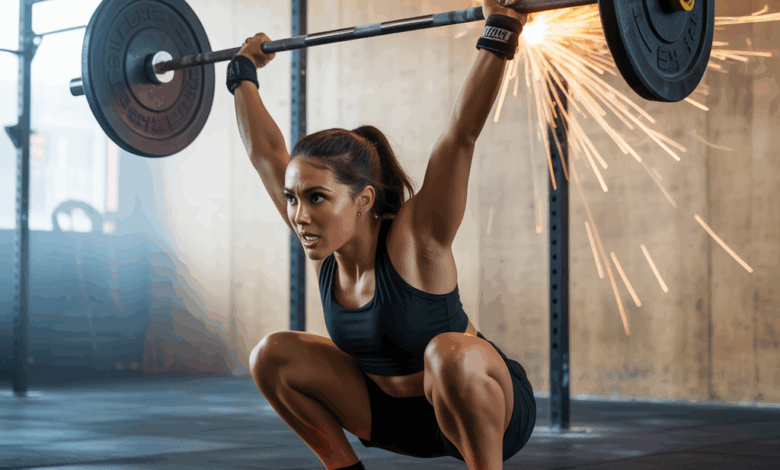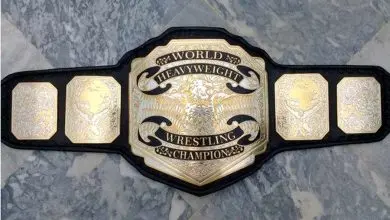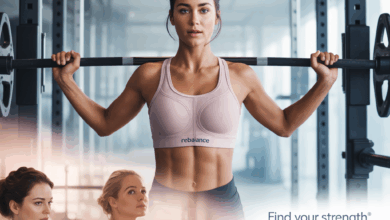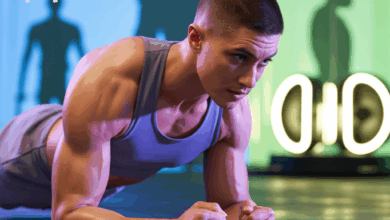Crossfit Shoes for Women for Performance — Find the Right Pair

Ever finished a WOD and thought, “My feet gave out before I did”? Whether you’re hitting box jumps, rope climbs, heavy cleans, or sprint intervals, the right footwear can be the difference between a PR and a sloppy set. If you’ve searched for crossfit shoes for women for performance, this guide breaks down what matters most so you can choose shoes that help — not hinder — every rep, jump, and sprint.
Why the right shoes matter: how footwear affects your CrossFit performance
CrossFit is unpredictable: one minute you’re deadlifting heavy, the next you’re sprinting or doing double-unders. A shoe that performs across these demands improves stability, reduces injury risk, and boosts confidence. The best women’s CrossFit shoes combine stability for lifts, traction for rope climbs and box jumps, and cushioning for running and high-rep metcons. Choosing poorly can cause blisters, unstable lifts, and inefficient movement patterns.
Choosing crossfit shoes for women for performance
Fit and stability — the foundation of every rep
A snug heel, secure midfoot, and slightly wider toe box let toes splay naturally during heavy lifts and provide stability during lateral movements. Look for a low heel-to-toe drop (or a flat sole) for weightlifting stability and a locked-in lacing system to prevent foot slippage during burpees or box jumps.
Cushioning vs. responsiveness — balance for metcons
Cushioning matters on longer runs or high-impact WODs, but too much foam reduces ground feel and stability. A responsive midsole that absorbs shock while still transferring power is ideal for mixed modal workouts. Think durable foam that won’t compress quickly under repeated jumps or sprints.
Traction and durability — for rope climbs, sled pushes, and box jumps
Sticky rubber outsoles with multi-directional tread patterns help keep you planted on the box and give grip during rope climbs. Reinforced toe boxes and abrasion-resistant materials increase lifespan, especially for athletes who climb or do frequent rope work.
Breathability and weight
Breathable mesh or engineered textiles keep your feet cool during long classes. Lightweight shoes prevent early fatigue during double-unders and running-focused WODs, but not at the expense of structural support.
Top features to look for in women’s CrossFit and functional fitness footwear
- Low heel-to-toe drop (0–8 mm) for improved lifting mechanics
- Stiff sole or heel reinforcement for heavy lifts
- Durable rubber outsole with good lateral traction
- Secure lacing or straps to prevent heel lift
- Protective toe cap for rope climbs and toe drag
- Breathable upper materials for comfort during long WODs
Choose shoes by workout type: practical recommendations
For heavy lifting & Olympic lifts
Prioritize stability. Weightlifting shoes or cross-trainers with a firmer heel provide a stable platform for squats, cleans, and snatches. A slight heel lift can improve ankle mobility and depth in squats for many lifters.
For metcons and mixed-modal WODs
Look for a balance of cushioning and responsiveness. A versatile cross-trainer with good traction and durable materials will handle box jumps, burpees, short runs, and kettlebell work.
For running-focused CrossFit days
If your programming includes longer runs (400m+ consistently), consider a lighter, more cushioned trainer or dedicated running shoe for recovery days, while keeping a more stable pair for heavy days.
Practical tips, workout variations, and real-world examples
Tip 1 — Rotate shoes: Many competitive athletes keep a pair for lifting and a pair for metcons. Rotating reduces wear and optimizes performance for each session.
Tip 2 — Break-in before a competition: New shoes should be used in practice WODs first to prevent hotspots and blisters.
Workout variation — “Strength + Sprint”: 5 sets of 3 heavy cleans (use stable, low-drop shoes) followed immediately by a 200m sprint (switching to a lighter pair can help if possible). If you can’t switch mid-WOD, choose a responsive trainer that still offers lift support for cleans.
Real-world example: Sarah, a 32-year-old CrossFitter, switched from an overly cushioned runner to a flat, stable cross-trainer. Her squat depth improved and she reported fewer ankle aches during cleans — and her rope climbs felt more secure thanks to a reinforced toe box.
Healthy lifestyle advice to support foot health and performance
- Strengthen feet and ankles with banded ankle exercises, single-leg deadlifts, and toe curls to improve stability in shoes.
- Prioritize recovery: foam rolling calves and calves’ mobility help maintain ankle dorsiflexion for better squat and clean form.
- Nutrition matters: adequate protein, vitamins D and calcium support tissue repair and bone health — helpful after heavy training cycles. See our nutrition guides for more on fueling for functional fitness.
- Sleep and hydration: both help with recovery and reduce the risk of overuse injuries caused by fatigued movement patterns.
Maintenance and when to replace your shoes
Inspect soles for uneven wear, test midsole compression (squeeze the foam), and replace shoes every 6–12 months depending on frequency and intensity. If you notice instability during lifts, decreased traction, or persistent foot pain, it’s time for a new pair.
Frequently Asked Questions
1. Are CrossFit shoes different for women vs. men?
Shoe construction is similar, but women’s models often have narrower heels and smaller sizes tailored to typical foot shapes. Fit matters far more than gender label — always try shoes on and test movement if possible.
2. Can I use running shoes for CrossFit?
Occasionally yes for longer running-focused sessions, but most running shoes lack the lateral support, toe protection, and durability needed for heavy lifting, rope climbs, and high-impact box jumps common in CrossFit.
3. How much should I spend on performance CrossFit shoes?
Invest in quality, but you don’t need the most expensive pair. Expect to spend for durability and technology; mid-range performance trainers often offer the best value. Prioritize fit and function over brand hype.
Conclusion — make a confident choice and train smarter
Choosing the right crossfit shoes for women for performance means balancing stability, traction, cushioning, and durability to match your programming and goals. Rotate shoes when possible, strengthen your feet, and prioritize recovery to get the most from every WOD. Ready to refine your training kit? Browse our workout routines to find sessions that test shoe performance, and check our wellness tips for recovery strategies. Try a pair that fits your lifting and metcon needs, test them in practice, and then take on your next PR with more confidence.
Want help picking the right pair based on your typical WODs? Leave a comment or share your goals and I’ll recommend shoe features to match your training style.





